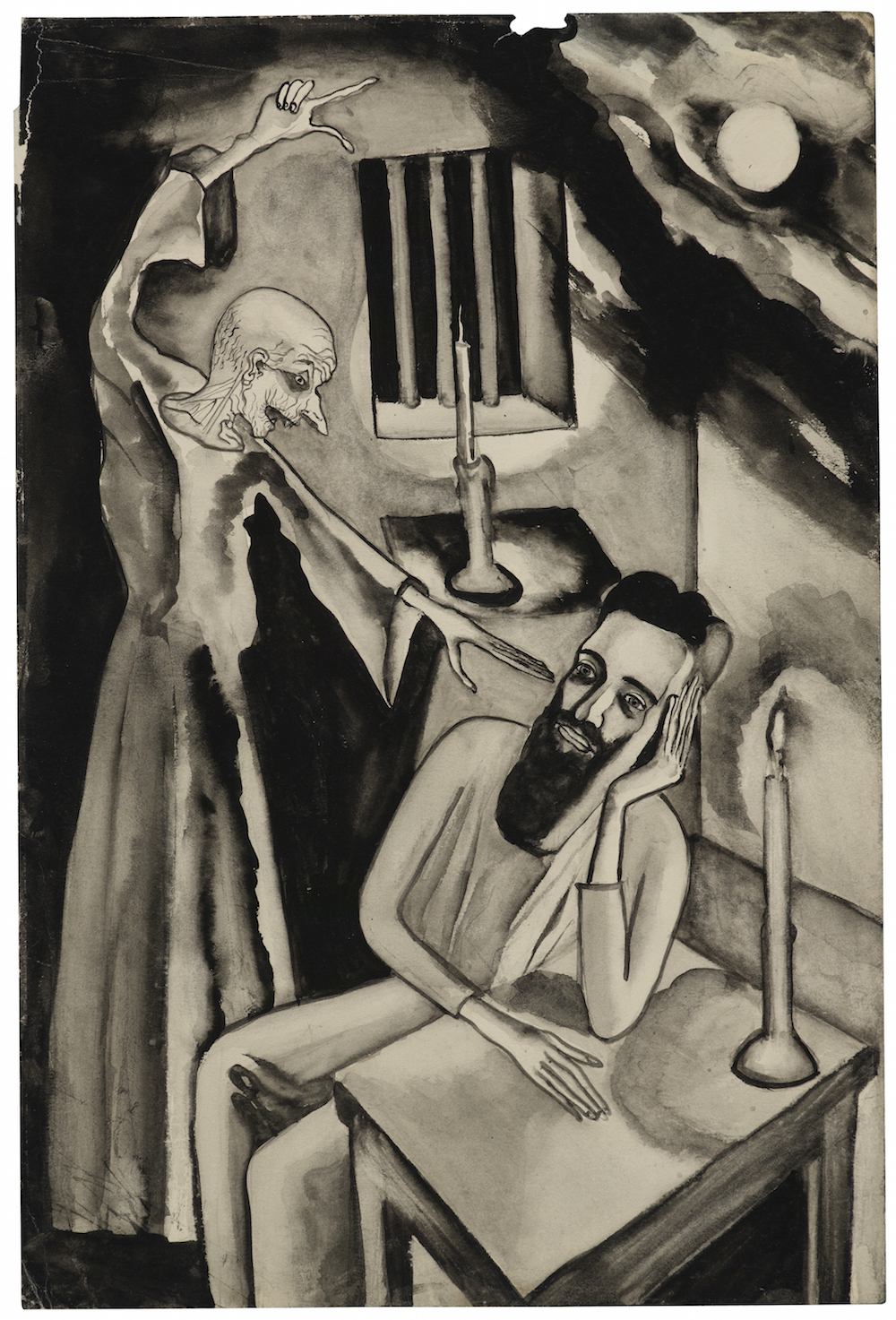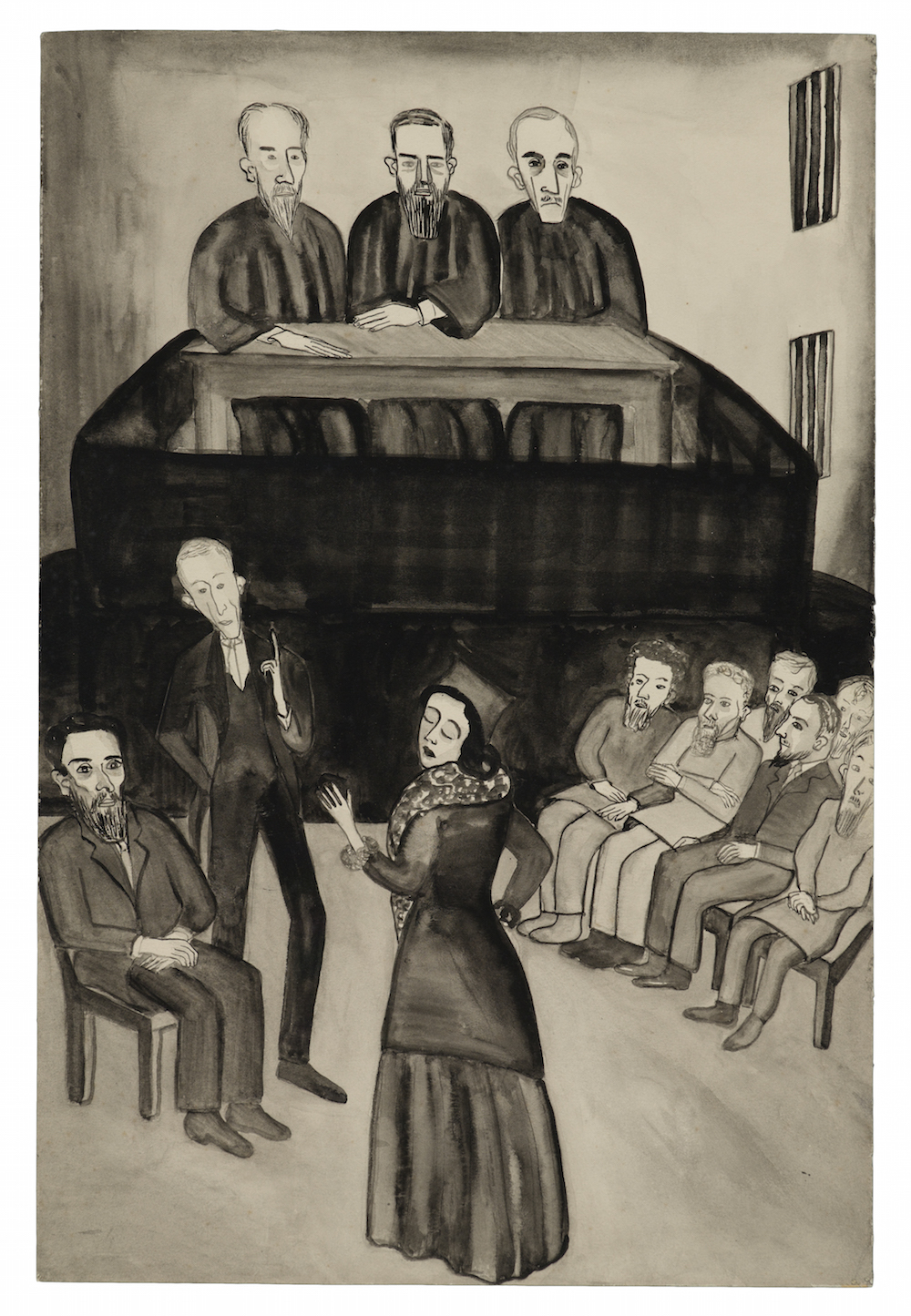
Images belong to The Estate of Alice Neel.
We all know the reputation of 19th-century Russian novels: long, dense bricks of pure prose, freighted with deep moral concerns and, to the uninitiated, enlivened only by a confusing farrago of patronymics. And sure, while they may have a bit of a learning curve to them, these classic works of literature also, so their advocates assure us, boast plenty to keep them relevant today — just the quality, of course, that makes them classic works of literature in the first place.

While we should by all means read them, that doesn’t mean we can’t get a taste of these much-discussed books before we heft them and turn to page one by, for example, checking out their illustrations. These vary in quality with the editions, of course, but how much of the art that has ever accompanied, say, Fyodor Dostoyevsky’s The Brothers Karamazov has looked quite as evocative as the never-published illustrations here? They come from the hand of the Pennsylvania-born artist Alice Neel, commissioned in the 1930s for an edition of the novel that never saw the printing press.

The Paris Review’s Dan Piepenberg, posting eight of Neel’s illustrations, highlights “how attuned these two sensibilities are: it’s the marriage of one kind of darkness to another”; “the black storm cloud of Neel’s pen is well suited to Dostoyevsky’s questions of God, reason, and doubt.” And yet Neel also manages to express the novel’s “madness and comedy,” bringing “a manic bathos to these scenes that lends them both gravity and levity; in every wide, glassy pair of eyes, grave questions of moral certitude are undercut by the absurd.”
You can see all of eight of Neel’s Karamazov illustrations at The Paris Review, not that they provide a substitute for reading the novel itself (which you can find in our collection of Free eBooks). After all, that’s the only way to find out what exactly happens at that bacchanal just above.
Related Content:
Fyodor Dostoevsky Draws Elaborate Doodles In His Manuscripts
Albert Camus Talks About Adapting Dostoyevsky for the Theatre, 1959
Colin Marshall hosts and produces Notebook on Cities and Culture as well as the video series The City in Cinema and writes essays on cities, language, Asia, and men’s style. He’s at work on a book about Los Angeles, A Los Angeles Primer. Follow him on Twitter at @colinmarshall or on Facebook.


My favorite novel. I never recognized the humor in it until I read it out loud to my daughter when she was small. She thought Smerdyakov was a scream.
Alice Neel also figures prominently in Joe Gould’s Secret, the masterpiece of longtime New Yorker writer Joseph Mitchell. In that book Mitchell describes how Neel painted a striking portrait of Gould and her relationship with him. (You can easily find an image of the portrait online.) Neel’s role and the entire book are unforgettable.